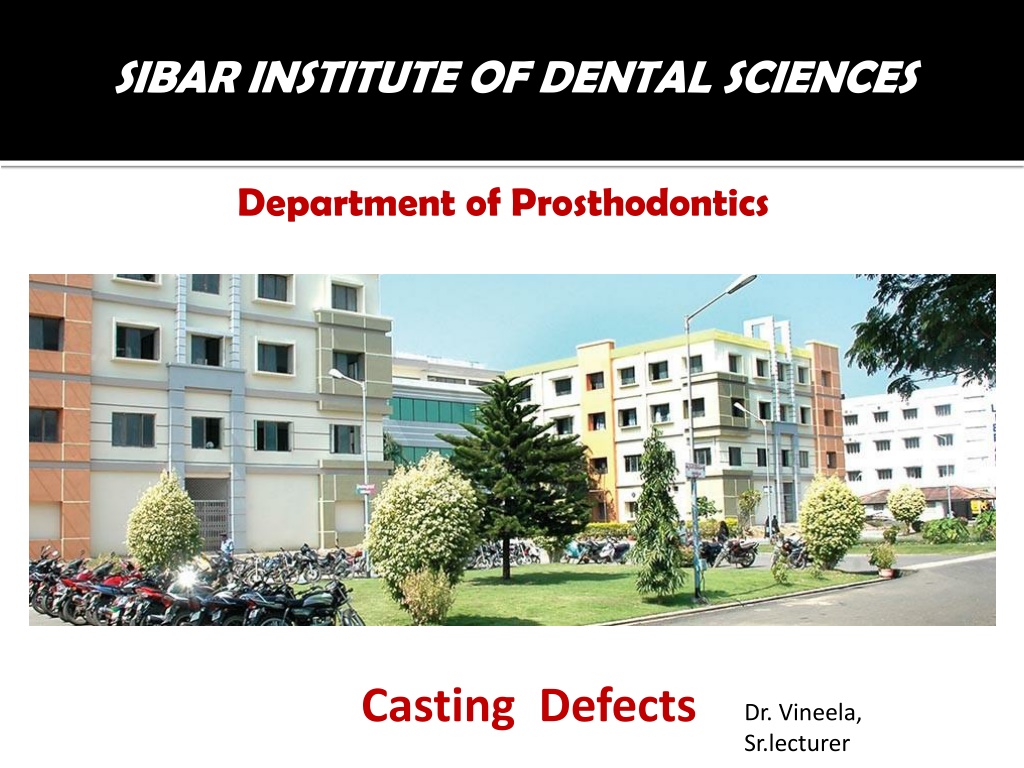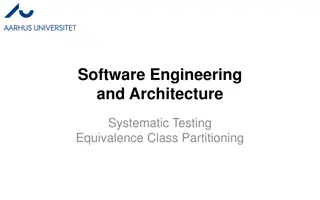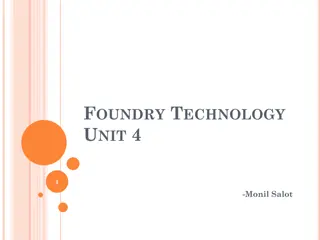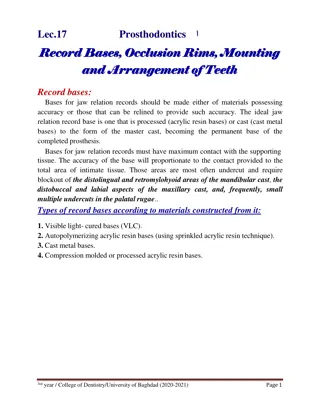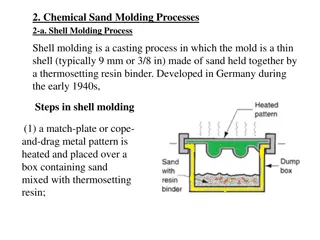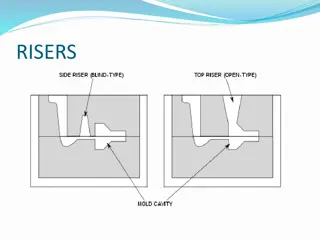Common Casting Defects in Prosthodontics: Causes and Prevention
Casting defects in prosthodontics can result from errors in the casting procedure, leading to issues like distortion, surface roughness, porosity, and incomplete detail. Various causes such as stress relaxation during wax pattern preparation can contribute to distortion, while factors like air bubbles and water films can affect the quality of the final casting. Preventive measures include proper investment techniques, vibration, and correct application of wetting agents to minimize defects.
Download Presentation

Please find below an Image/Link to download the presentation.
The content on the website is provided AS IS for your information and personal use only. It may not be sold, licensed, or shared on other websites without obtaining consent from the author. Download presentation by click this link. If you encounter any issues during the download, it is possible that the publisher has removed the file from their server.
E N D
Presentation Transcript
SIBAR INSTITUTE OF DENTAL SCIENCES Department of Prosthodontics Related image Casting Defects Dr. Vineela, Sr.lecturer
Error in the casting procedure often results in defective casting, these defects are known as casting defects.
According to philips Distortion Surface roughness and irregularities Porosity Incomplete or missing detail
According to Rosensteil Roughness Nodules Fins Incompleteness Voids or porosity Marginal discrepancy Dimensional inaccuracies
Distortion of the casting is probably related to distortion of the wax pattern. Causes: Can occur from the time of wax pattern preparation to the time of investing due to stress relaxation. Distortion of the wax pattern occurs during the investment procedure. Minimized by: Application of minimum pressure Manipulation of wax at high temperature Investing pattern immediately If storage is necessary, store in refrigerator
Surface roughness Defined imperfections whose height, width and direction establish the predominant surface pattern. Surface irregularities Isolated imperfections such as nodules that are not characteristic of the entire surface area as relatively finely spaced surface The surface roughness of the casting is greater than the wax pattern from which it is made, because - the particle size of the investment and -its ability to reproduce the pattern in microscopic detail
Air bubbles: Small nodules on the casting are caused by air bubbles, that become attached to the surface during or subsequent to the investing procedure. Prevented By: Proper investment technique Vibration of mix or by vacuum mixing Application of wetting agent properly and correctly important that it be applied in a thin layer.
Water films: Wax is repellent to water, & If the Investment becomes separated from the wax pattern, a water film may form irregularly over the surface. Appears as minute ridges or veins on the surface. Prevented By: 1.Use of wetting agent 2.Correct L/P ratio (Too high L/P ratio may produce these irregularities)
Rapid Heating Rates It produces Fins or spines on the casting Cause- because of Flaking of the investment Prevented by: Heat gradually at least 60min from room temperature to 700 c. Greater the bulk more slowly heated.
Under heating Incomplete elimination of wax residues may occur, if the heating time is too short. This factor is mainly important for low heat technique.
Prolonged heating During high heat technique, decomposition or disintegration of the investment occurs & the walls of the mold are roughened. Product of decomposition are sulphorous compounds, which contaminates the casting, this is the reason why the surface of the casting does not respond to pickling sometimes. Prevented by- when thermal expansion technique is used, the mold should be heated to the casting temperature & NEVER HIGHER.
Liquid/Powder Ratio The amount of water and powder measure should be accurate. Too little water- investment too thick & cannot be applied to the wax pattern Too much water- making investment easier but reproduces poor casting. Casting pressure To high pressure rough surface of the casting To low pressure incomplete casting Average 0.10 to 0.14 Mpa in an air pressure machine and - 3 to 4 turns of the spring in centrifugal casting machine.
Temperature of the alloy: If alloy is heated too high- surface roughness Too less- improper melting Composition of the investment: Ratio of binder to quartz influences surface texture of casting
Foreign bodies Any casting that shows sharp, well- defined deficiencies indicates the presence of some foreign particles in the mold. They may be: - Pieces of the investment - Bits of the carbon from the flux - Sulfur components from decomposition of the gypsum investment and high sulfur content torch flame. Pattern position Should not place too close together Should not place many patterns in same plane Space between the pattern is atleast 3mm
Impact of metal alloy Cause: The direct impact of molten alloy on the weak portion of the mold surface, may fracture or abrade the mold surface regardless of its bulk. Prevented by: This type of surface roughness or irregularities can be avoided by proper spruing. Placement of sprue at 45 degree Carbon inclusions Carbon from- carbon crucible, - carbon containing investment, improperly adjusted torch can be absorbed by the alloys during casting resulting in formation of carbides or visible carbon inclusion.
Classified as follows: I. Solidification defects A. localized shrinkage porosity B. Micro porosity II. Trapped gases A. pin hole porosity B. gas inclusion porosity C. sub surface porosity III. Residual air
Localized shrinkage porosity It is caused by premature termination of the molten metal during solidification. It mainly occurs at sprue-casting junction. Cause: Diameter is too narrow Length of the sprue is too long Absence of reservoir Direction of sprue at 90 degree
Prevented by- Using sprue of correct thickness Attach sprue to the thickest portion of the wax pattern Flaring the sprue at the point of attachment Placing reservoir close to the attachment
Suck back porosity A hot spot is created by the hot metal impinging on the mold wall near the sprue. This hot spot causes this region to FREEZE LAST Since the sprue is already solidified, NO MORE MOLTEN MATERIAL IS AVAILABLE, resulting in SUCK BACK POROSITY
It often occurs at OCCLUSOAXIAL OR INCISOAXIAL LINE ANGLE PREVENTED BY- Flaring the point of sprue attachment Reducing the temperature between the mold & molten alloy
MICROPOROSITY Occurs from solidification shrinkage, generally in fine grain alloy castings when solidification is too rapid Not detectable unless the casting is sectioned
Pin hole and Gas inclusion porosity Characterized by spherical contour, but gas inclusion porosities are much larger than pin hole porosity. Occur primarily because most metals dissolve gases when molten, these gases expelled during solidification.. Eg- copper & silver dissolves oxygen platinum & palladium dissolves hydrogen Also be caused by gas occluded from a poorly adjusted torch flame or use of oxidizing zone rather than reducing zone. Casting is usually black, do not clean easily on pickling
Sub surface porosity Caused by simultaneous nucleation of solid grains and gas bubbles at the first moment that the alloy freezes at mold walls Prevented by controlling the rate at which the molten metal enters the mold.
Back pressure porosity Some times referred to as entrapped-air porosity. found on the inner and outer surface of the casting when the casting or mold temperature is low, that solidification occurs before the trapped air can escape.
Causes Inability of the air in the mold to escape through the pores in the investment Prevented by: Proper burnout Sufficiently high casting pressure Adequate L/Pratio Thickness of investment between tip of pattern and end ofring is not greater than 6mm.
Factors that inhibit the mold fillingis: In sufficient venting In sufficient casting pressure, pressure should beapplied atleast for 4 sec Incomplete elimination of wax Lower L/p ratio Viscosity of the fused metal 1. 2. 3. 4. 5.
